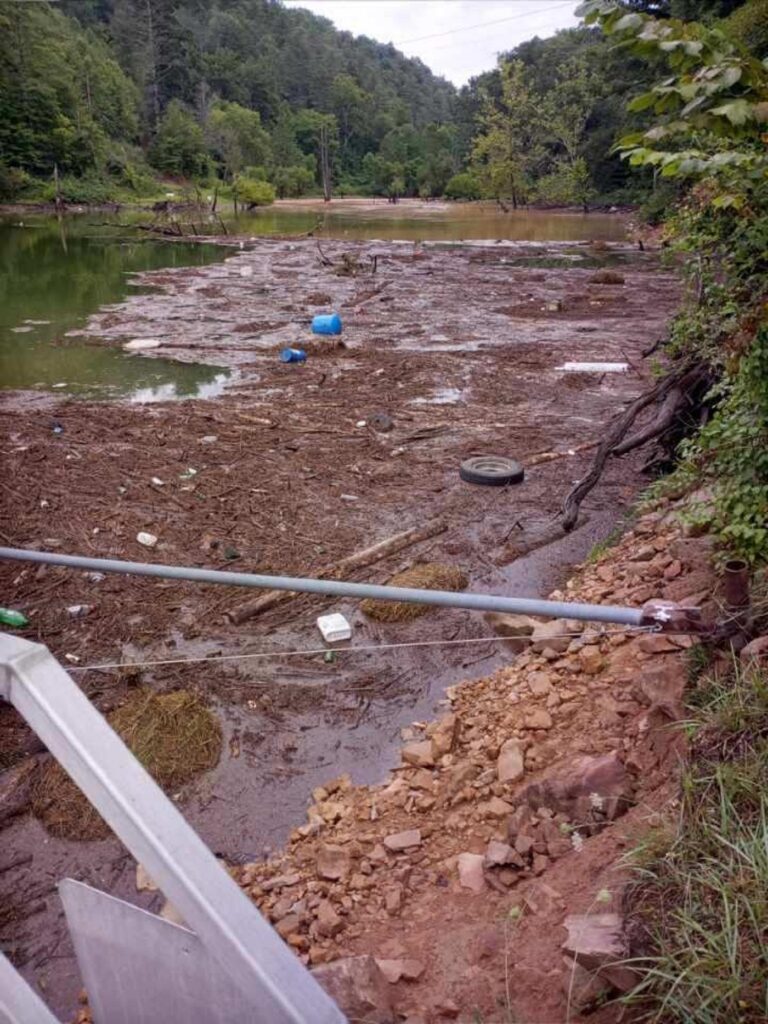NPDES Stormwater & Construction Pollution
Topics
- Introduction
- Suspended Particles
- Existing Contamination
- Construction Pollution Chemicals
- Stormwater Pollution Prevention Plan (SWPPP)
- Conclusion
Introduction – Construction Pollution
Clearing and developing construction sites disturbs soil and other materials, creating construction pollution. This pollution may be from the site itself, or from the procedures and materials used on the site. Stormwater runoff from rainfall can carry these materials off site. As a result, these materials pollute receiving surface waters. This is because the runoff may be toxic to fish, wildlife, and plants in the receiving water. However, Construction NPDES Stormwater Permits (see our recent blog article at https://www.escflorida.com/construction-stormwater-npdes-permits/) minimize this construction pollution and these impacts.
Suspended Particles

Digging, grading, drilling, and dewatering operations create particles from soil, clays, sand, organic matter, and debris. Stormwater runoff picks them up, then they become suspended. As a result, in the receiving surface water these suspended particles block off sunlight from plants and deplete oxygen. Once that occurs, the receiving water can become polluted and devoid of life. However, turbidity measurements determine if the suspended particles are excessive and capable of causing pollution.
Existing Contamination
In comparison to susended particles, construction operations do not cause existing contamination. On the contrary, existing contamination is caused by past usage of the site, legally or illegally, and includes several types of pollution. These types include gasoline, diesel fuel, oil, agricultural materials, or hazardous wastes. The contamination’s location and its concentration may be well documented and the contractor can be forewarned. On the other hand, it may not be and the contractor may discover it after disturbing it. Therefore, the contractor must prepare a plan to handle unknown pollution, including a list of emergency response contractors.
Construction Pollution Chemicals
These chemicals may come from developing the site, working on the equipment, or construction of buildings. For example, they may include, gas, oil, diesel fuel, paint, solvents, grease, fertilizer, pesticides, and sewage, and come from several sources including ordinary use, misuse, storage, leaks, spills, or vandalism.
Stormwater Pollution Prevention Plans
Stormwater Pollution Prevention Plans (aka SWPPPs) prevent construction pollution and eliminate or reduce the impact on receiving waters in several ways. Firstly, they identify operations which will cause pollution. Secondly, they result in a change of the operations. Thirdly, they identify effective controls and provide a schedule for implementation. Most importantly, prepare an effective SWPPP using resources such as the web site of the U.S. Environmental Protection Agency (https://www.epa.gov/npdes/stormwater-discharges-construction-activities).
Conclusion

Stormwater runoff from construction sites does not have to pollute receiving surface waters. If you need any assistance, ESC is here. The firm holds a Florida engineering business license and has a licensed Professional Engineer (P.E.) on staff. ESC’s staff scientists hold bachelors and masters degrees and have over seventy (70) years of combined experience in the stormwater, surface water pollution, and environmental permits field. ESC has been providing NPDES stormwater permits services to its clientele for over thirty (30) years. We have the credentials and experience to help you with your stormwater permits needs. Contact us today (https://www.escflorida.com/contact/). We strive to reply to all contacts promptly!


 So, there is a discussion of the engineering
So, there is a discussion of the engineering